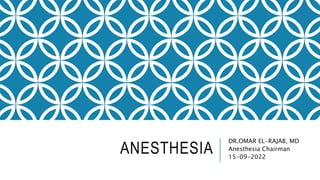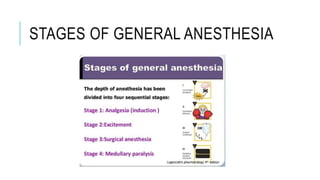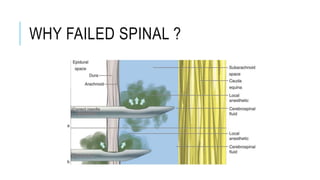Anesthesia is a way to control pain during surgery using drugs or gases called anesthetics. It can help control blood pressure, breathing, blood flow, heart rate, and rhythm. Anesthesia is crucial during surgery as the anesthesiologist monitors the patient's vitals and administers drugs to keep the patient unconscious. The main types of anesthesia are general, which uses intravenous drugs and gases to make the patient completely unconscious; regional, which numbs a large part of the body using injections or catheters; and local, which numbs a small area. The anesthesiologist plays a vital role in patient safety during surgical procedures.

















































